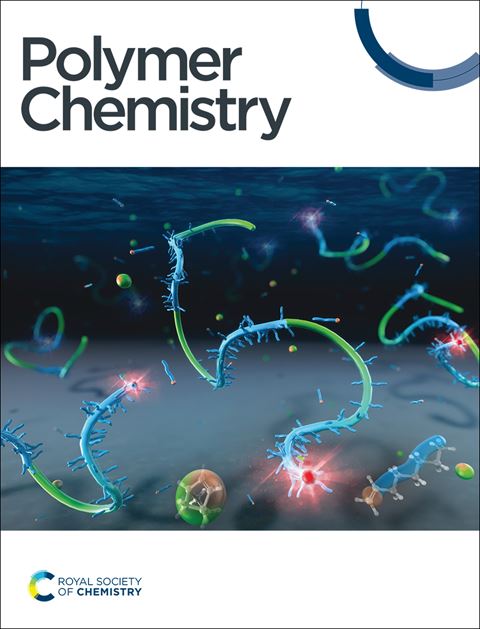Assembly-controlled supramolecular aggregation-induced emission systems based on amphiphilic block polymer hosts†
IF 3.9
2区 化学
Q2 POLYMER SCIENCE
引用次数: 0
Abstract
The fabrication of controlled supramolecular assemblies and understanding the associated structure–function relationships of these assemblies it is of great significance in supramolecular chemistry. Uniform fluorescence supramolecular polymeric vesicles and/or micelles with enhanced photophysical properties were elaborately designed and prepared from amphiphilic block polymer hosts bearing pillar[5]arene units. These supramolecular assemblies have a working mechanism reliant on the synergistically confined effect of hydrophobic interactions and host–guest interactions. Additionally, the transformation from supramolecular polymeric vesicles to supramolecular polymeric micelles was achieved by selecting block polymer hosts with different length hydrophilic segments. The factors affecting the optical performance were investigated in detail, including the guest patterns, density of the pillar[5]arene units, the length of the hydrophilic segments and the solvent environment. By exploiting the amphiphilic block polymer hosts, efficient artificial light-harvesting systems with ordered arrangements of donor and acceptor molecules and tunable emission wavelengths were constructed. These artificial light-harvesting systems were used in Morse code information encryption matrixes with high storage capacity capable of simultaneously storing Chinese, English and numerical digits.

基于两性嵌段聚合物宿主的组装控制超分子聚集诱导发射系统
制备可控超分子组装体和建立结构-功能关系在超分子化学中具有重要意义。利用含有支柱[5]炔单元的两亲嵌段聚合物宿主,遵循疏水相互作用和宿主-宿主相互作用协同限制效应的工作机制,精心设计并制备了具有增强光物理性质的均匀荧光超分子聚合物囊泡和/或胶束。此外,通过选择嵌段聚合物主体内不同长度的亲水段,实现了从超分子聚合物囊泡到超分子聚合物胶束的转变。通过客体模式、柱[5]炔单元密度、亲水段长度和溶剂环境等影响因素,详细解读了光学性能。利用两亲性嵌段聚合物宿主,很好地构建了供体和受体分子有序排列的高效人工光收集系统,实现了发射波长的可调,并将其用作信息加密矩阵的莫尔斯电码,具有同时存储中文、英文和数字的高存储容量。
本文章由计算机程序翻译,如有差异,请以英文原文为准。
求助全文
约1分钟内获得全文
求助全文
来源期刊

Polymer Chemistry
POLYMER SCIENCE-
CiteScore
8.60
自引率
8.70%
发文量
535
审稿时长
1.7 months
期刊介绍:
Polymer Chemistry welcomes submissions in all areas of polymer science that have a strong focus on macromolecular chemistry. Manuscripts may cover a broad range of fields, yet no direct application focus is required.
 求助内容:
求助内容: 应助结果提醒方式:
应助结果提醒方式:


